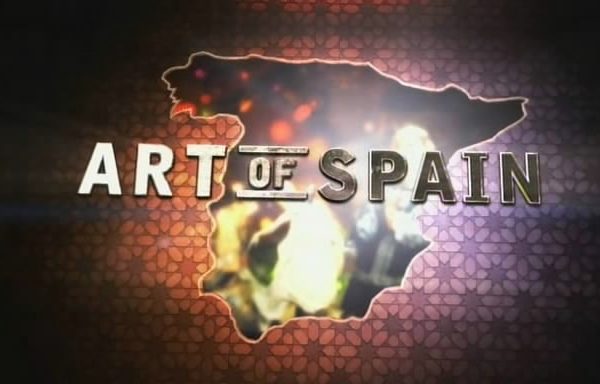Art That Made Us episode 4: A splintering of politics and religion in the British Isles under the Stuart kings leads to more questioning art, new science and architecture. Architect Amanda Levete climbs the Tulip Stairs in the Queen’s House, Greenwich, and reassesses Inigo Jones’ elegant and innovative design, while portrait artist Tai Shan Schierenberg encounters Van Dyck’s monumental portrait of the Earl of Pembroke’s family and finds signs of the dysfunction and tensions which point to the civil war to come.
This was a war that would be waged across three kingdoms, and artist Rita Duffy explores some of the poisonous propaganda it created in Wenceslas Hollar’s Teares of Ireland woodcuts, while photographer Platon examines the Puritan aesthetic through Samuel Cooper’s ‘warts and all’ miniature of Oliver Cromwell.
The battle between royalist and parliamentary forces brought bloodshed but ultimately the rise of a more questioning culture. Actor Anton Lesser performs excerpts of John Milton’s daring Paradise Lost, which laments the fall of the republic through the figure of a charismatic Satan rebelling against God, the king.
The restoration of the monarchy saw a new creative flourishing in works by playwright Aphra Behn and the intricate baroque carvings of Grinling Gibbons. But it is in the rise of a more scientific mindset that creativity would find greatest expression: artist Angela Palmer marvels at the artistry of Robert Hooke’s Micrographia, and sculptor Thomas Heatherwick reveals the brilliant architectural deceptions in Christopher Wren’s dome of St Paul’s.
Art That Made Us episode 4
House of Stuart
The House of Stuart, originally Stewart, was a royal house of Scotland, England, Ireland and later Great Britain. The family name comes from the office of High Steward of Scotland, which had been held by the family progenitor Walter fitz Alan (c. 1150). The name Stewart and variations had become established as a family name by the time of his grandson Walter Stewart. The first monarch of the Stewart line was Robert II, whose male-line descendants were kings and queens in Scotland from 1371, and of England and Great Britain from 1603, until 1714. Mary, Queen of Scots, was brought up in France where she adopted the French spelling of the name Stuart.
In 1503, James IV married Margaret Tudor, thus linking the royal houses of Scotland and England. Elizabeth I of England died without issue in 1603, and James IV’s great-grandson (and Mary’s only son) James VI of Scotland succeeded to the thrones of England and Ireland as James I in the Union of the Crowns. The Stuarts were monarchs of Britain and Ireland and its growing empire until the death of Queen Anne in 1714, except for the period of the Commonwealth between 1649 and 1660.
In total, nine Stewart/Stuart monarchs ruled Scotland alone from 1371 until 1603, the last of which was James VI, before his accession in England. Two Stuart queens ruled the isles following the Glorious Revolution in 1688: Mary II and Anne. Both were the Protestant daughters of James VII and II by his first wife Anne Hyde and the great-grandchildren of James VI and I. Their father had converted to Catholicism and his new wife gave birth to a son in 1688, who was to be brought up as a Roman Catholic; so James was deposed by Parliament in 1689, in favour of his daughters. However, neither daughter had any children who survived to adulthood, so the crown passed to the House of Hanover on the death of Queen Anne in 1714 under the terms of the Act of Settlement 1701 and the Act of Security 1704.
Grinling Gibbons
Grinling Gibbons (4 April 1648 – 3 August 1721) was an Anglo-Dutch sculptor and wood carver known for his work in England, including Windsor Castle and Hampton Court Palace, St Paul’s Cathedral and other London churches, Petworth House and other country houses, Trinity College, Oxford, and Trinity College, Cambridge. Gibbons was born and educated in Holland of English parents, his father being a merchant. He was a member of the Drapers’ Company of London. He is widely regarded as the finest wood carver working in England, and the only one whose name is widely known among the general public.
Most of his work is in lime (Tilia) wood, especially decorative Baroque garlands made up of still-life elements at about life size, made to frame mirrors and decorate the walls of churches and palaces, but he also produced furniture and small relief plaques with figurative scenes. He also worked in stone, mostly for churches. By the time he was established he led a large workshop, and the extent to which his personal hand appears in later work varies.




